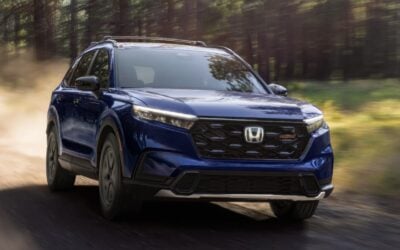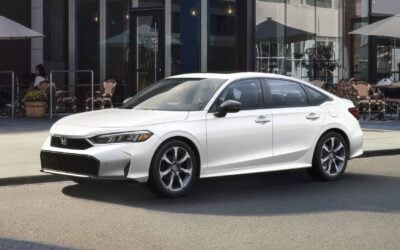The summer car buying season is here, but June 2025 brings new challenges that could trip up even seasoned shoppers. Between the expiration of Memorial Day deals, tariff-induced price hikes, and the arrival of 2026 models, buyers need to play it smart this month.
If you’re shopping for a new or used car in June, here’s how to stay in control of your deal, and ultimately save more while stressing less.
Memorial Day Deals End June 2
Most Memorial Day offers, including 0% APR financing and cash incentives, officially end on June 2. If you’re hoping to lock in a deal you saw in May, don’t wait.
After that, expect automakers to scale back incentives. With tariffs pressuring profit margins and interest rates creeping up again, many brands are already pulling back on generous financing and lease offers.
Mixed Signals From Automakers

Pricing strategies are all over the map right now, and it’s creating confusion for buyers. Recent pricing announcements show that automakers are still figuring out how to navigate ongoing 25% tariffs on auto imports:
- Subaru has raised prices across the board, effective immediately. Only the Solterra EV has been spared. Most models see prices rise by $1,000 – $2,000.
- Volkswagen says it will keep prices unchanged through June in an effort to attract hesitant buyers.
- Hyundai previously pledged not to raise prices until June 2, but it’s unclear what will happen after that date.
- Other automakers may follow Subaru’s lead, especially as 2026 models begin arriving in greater numbers.
While some automakers are trying to keep buyers engaged, others are already adjusting prices in anticipation of tighter margins.
June Auto Tariff Update: What Changed, and What Hasn’t
On May 28, a federal court put the Trump administration’s proposed reciprocal tariffs on hold, offering a brief reprieve in the broader trade fight. However, it’s important to note that this ruling does not affect the ongoing 25% tariffs on imported vehicles and parts, which remain in full effect.
These tariffs continue to put pressure on automakers that rely heavily on imports. Brands most affected include:
- Volkswagen, BMW, and Mercedes-Benz, which import the majority of their U.S. inventory from Europe and Mexico.
- Mazda, which has minimal U.S. production and imports most of their vehicles.
- Volvo and Genesis, both of which depend on international production for much of their lineup.
Meanwhile, automakers with large U.S. production footprints (such as Toyota, Honda, Ford, and General Motors) are somewhat more insulated, although they still face higher costs for imported components.
👉 New: The Best (and Worst) American-Made Cars and Trucks
The takeaway? Tariff-driven cost increases are still rippling through the market, especially for brands with global supply chains. Price hikes may continue as automakers adjust to these lasting headwinds.
Use our free Tariff Checker to see which cars are directly impacted
Incentives Are Drying Up

Cheap lease deals and 0% financing are fading. Interest rates remain near 30-year highs, and with bond market volatility, we’re seeing rates drift even higher.
That said, not all segments are affected equally. Automakers are more likely to incentivize vehicles they need to move, including:
- Full-size trucks
- Luxury cars and SUVs
- Electric vehicles (EVs)
- Any of the slowest-selling cars in America
Use tools like CarEdge Pro to zero in on the most negotiable cars near you.
Inventory Is Up… But It Depends on the Brand
After a frenzy of spring buying, new car inventory is finally creeping up. According to CarEdge Pro, market day supply jumped 15% from early April to late May, going from 72 to 83 days.
But it’s not an even playing field:
- Toyota and Honda vehicles remain in tight supply.
- Trucks, luxury cars, and EVs are seeing the biggest inventory buildup.
Here’s a look at new car inventory for the top 20 car and truck brands in America. Brands with a higher inventory (as measured by market days of supply) are more likely to offer the best deals in June, along with having the most negotiable prices:
| Brand | Days of Market Supply | Cars For Sale | Negotiability Score | Average Selling Price |
|---|---|---|---|---|
| Toyota | 37 | 289,117 | Low | $43,366 |
| Ford | 109 | 492,443 | High | $53,551 |
| Chevrolet | 75 | 308,835 | Average | $48,101 |
| Honda | 61 | 194,477 | Below Average | $37,898 |
| Nissan | 111 | 177,222 | High | $33,488 |
| Hyundai | 122 | 229,928 | High | $36,768 |
| Kia | 80 | 156,788 | Average | $36,401 |
| Subaru | 86 | 113,548 | Average | $36,192 |
| GMC | 93 | 138,937 | Above Average | $65,559 |
| Jeep | 119 | 139,449 | High | $48,439 |
| Ram | 139 | 115,170 | High | $60,992 |
| Mazda | 127 | 109,159 | High | $37,019 |
| Volkswagen | 113 | 66,458 | High | $37,045 |
| BMW | 83 | 58,463 | Average | $76,057 |
| Lexus | 38 | 40,210 | Low | $61,475 |
| Mercedes-Benz | 109 | 82,593 | High | $79,714 |
| Audi | 143 | 49,687 | High | $66,087 |
| Buick | 82 | 38,474 | Average | $35,629 |
| Cadillac | 101 | 45,727 | High | $77,527 |
| Dodge | 97 | 17,746 | Above Average | $50,100 |
A $50,000 Milestone Arrives
We’re approaching a symbolic milestone: the average transaction price is nearing $50,000, according to Cox Automotive. It’s hovered just below that figure multiple times in the past three years. June or July are likely to be the month we finally cross that line.
Why? 2026 models are arriving, and with them come modest price increases. Our recent analysis of 2026 pricing shows that MSRP hikes remain the norm, not the exception.
Your Gameplan For June 2025
With prices rising, incentives drying up, and market conditions shifting fast, having a solid strategy is more important than ever. Here’s how to shop confidently and get the best possible value in today’s market.
- Use CarEdge Car Search
Track price trends, find negotiable cars, and make smarter decisions. Don’t expect deals on fresh 2026 arrivals, but 2025 models will become more negotiable as summer goes on. - Stay Flexible
Falling in love with a specific make or trim is risky in today’s market. If you can keep an open mind, you’re more likely to find a better deal and avoid paying top dollar. - Consider Nearly-New Alternatives
Looking for a new car? Consider 1–3 year-old used vehicles to save thousands and avoid immediate depreciation. On the other hand, some buyers will find more value in new cars with low-APR financing, which could save you in the long run. This is especially true if you plan to keep your car for more than five years. - Let the Pro Handle It
Hate negotiating? Our CarEdge Concierge service finds your perfect car, and we negotiate the deal for you from start to finish. Already found the one? Use our Negotiation Expert to get the best price possible. It’s our best value ever.













0 Comments